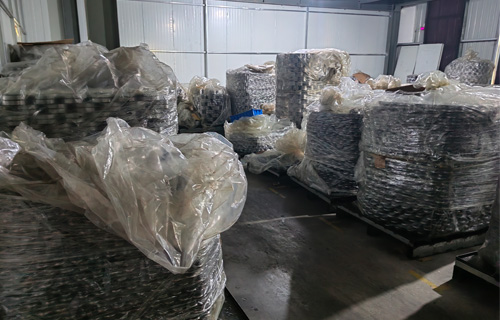
Sep . 18, 2024 22:08 Back to list
nj 209 bearing
Understanding NJ 209 Bearing Specifications and Applications
The NJ 209 bearing is a crucial component in various mechanical systems, widely recognized for its performance and reliability. This article delves into the specifications, applications, and advantages of the NJ 209 bearing, making it an essential topic for engineers and technicians in the field of machinery and automotive systems.
Specifications
The NJ 209 bearing is categorized as a cylindrical roller bearing, which features a particular design that allows it to handle high radial loads while maintaining a degree of axial load capability. Specifically, it typically has a bore diameter of 45 mm, an outer diameter of 85 mm, and a width of 19 mm. The NJ bearing series is characterized by its one-piece cage, which enhances its ability to support radial loads effectively.
One of the notable features of the NJ 209 bearing is its use of roller elements that allow for minimal friction, resulting in increased efficiency and longevity compared to other bearing types. The NJ 209 is composed of high-quality materials, usually carburized steel, which provides enhanced wear resistance and durability under various operational conditions.
Applications
The NJ 209 bearing is utilized in a wide range of applications due to its versatile design. It is commonly found in the automotive industry, specifically in engines, gearboxes, and differentials, where it helps in the smooth rotation of components. Additionally, the NJ 209 bearing is employed in electric motors, pumps, and various industrial machinery.
nj 209 bearing

In the context of heavy machinery, the NJ 209 bearing serves crucial roles in providing stability and supporting high loads in equipment such as conveyor belts and mining machinery. Its ability to sustain significant radial loads and moderate axial loads makes it ideal for these heavy-duty applications.
Advantages
One of the primary advantages of the NJ 209 bearing is its ability to operate efficiently under high-speed conditions. The design of the cylindrical rollers reduces the contact area with the raceway, allowing for faster operation without compromising durability. This feature is particularly valuable in high-performance applications where speed and efficiency are paramount.
Furthermore, the NJ 209 bearing is easy to install and maintain, providing optimal convenience for technicians. Regular maintenance routines, such as proper lubrication, can enhance its longevity, making it a cost-effective choice in the long run.
Another notable advantage is its adaptability to various environments. Whether in high-temperature environments or applications exposed to moisture and dust, the NJ 209 bearing is designed to withstand such conditions, ensuring prolonged service life.
Conclusion
In conclusion, the NJ 209 bearing stands out as a reliable choice for various applications where load bearing and rotational efficiency are critical. Its design specifications, versatility in applications, and notable advantages make it an indispensable component in numerous industries. For engineers and technicians, understanding the intricacies of the NJ 209 bearing is essential for optimizing performance in mechanical systems, ensuring they run smoothly and efficiently for years to come. As technology continues to evolve, the importance of such reliable bearings in machinery will undoubtedly grow, highlighting the need for ongoing research and development in this field.
Latest news
-
Grooved Ball Bearing Design and Functionality
NewsJun.04,2025
-
Concrete Mixer Bearing Load Capacity Testing
NewsJun.04,2025
-
6004 Bearing Dimensions in Robotic Joint Designs
NewsJun.04,2025
-
Advantages of Single-Row Deep Groove Ball Bearings
NewsJun.04,2025
-
Applications of Deep Groove Ball Bearings in Automotive Systems
NewsJun.04,2025
-
Innovations in Bearing Pressing Machine Design
NewsJun.04,2025
